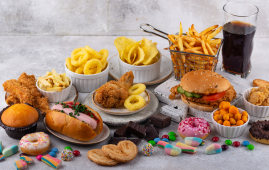

A recent study published in The Lancet Microbe highlights groundbreaking findings about 22 viruses that can persist in human semen after acute infections. This systematic review underscores significant implications for disease transmission, male fertility, and public health strategies during outbreaks.
Viruses in Semen: Key Findings
The research identified that certain viruses, such as Ebola and Zika, can remain detectable in semen for extended periods, with some showing evidence of sexual transmission. The longest persistence recorded was for the Ebola virus, detected up to 988 days after recovery. The study examined data from over 24,000 articles and analyzed findings from 8,387 participants, revealing variations in viral persistence due to pathogen types, immune response, and detection methods.
Why Viruses Persist in Semen
The male reproductive tract is an immune-privileged site, allowing viruses to evade systemic immune responses and persist longer than in other parts of the body. Detection methods like polymerase chain reaction (PCR) and antigen assays confirmed the presence of replication-competent viruses, including dengue, Zika, and adenovirus.
Public Health Implications
This persistence has far-reaching consequences. Prolonged viral shedding in semen can contribute to disease resurgence even after outbreaks are controlled. For example, Zika virus was linked to sexual transmission, with persistence lasting a median of 57 days. Such findings highlight the need for guidelines to mitigate sexual transmission risks and protect reproductive health.
Call for Future Research
The study also emphasized the gaps in current research, particularly in understanding how immune status affects viral clearance. More systematic testing and longitudinal studies are necessary to develop therapeutic interventions and refine outbreak containment strategies. Join the Infectious Disease 2025 conferences to learn more about the latest research trends.
Conclusion
This review expands knowledge on viral persistence, identifying 22 viruses that can remain in semen after acute infection. With nine of these linked to sexual transmission, these findings have critical implications for public health, emphasizing the need for proactive measures during outbreaks.
More Information: Caitlin Pley, Laura Jung, Nadra Nurdin, et al. (2024) Duration of viral persistence in human semen after acute viral infection: a systematic review, The Lancet Microbe. doi:https://doi.org/10.1016/j.lanmic.2024.101013.
more recommended stories
 Urine-Based microRNA Aging Clock Predicts Biological Age
Urine-Based microRNA Aging Clock Predicts Biological AgeKey Takeaways (Quick Summary) Researchers developed.
 Ultramarathon Physiology: What HCPs Should Know?
Ultramarathon Physiology: What HCPs Should Know?Ultramarathon Metabolism: What Happens to the.
 Sterilized Fermented Beverage for Obesity: New Evidence
Sterilized Fermented Beverage for Obesity: New EvidenceEarly Insights Into a Sterilized Fermented.
 New Malaria Prevention Insights From African Biostatistics
New Malaria Prevention Insights From African BiostatisticsHow New Data Is Reframing Malaria.
 Ultra-Processed Foods in Mediterranean Youth: Risks
Ultra-Processed Foods in Mediterranean Youth: RisksThe Mediterranean region is widely recognized.
 Plant-Based Pet Food Cuts Carbon Footprint – Study finds
Plant-Based Pet Food Cuts Carbon Footprint – Study findsThe Growing Environmental Burden of Pet.
 Ultra-Processed Foods May Harm Brain Health in Children
Ultra-Processed Foods May Harm Brain Health in ChildrenUltra-Processed Foods Linked to Cognitive and.
 Children’s Health in the United States is Declining!
Children’s Health in the United States is Declining!Summary: A comprehensive analysis of U.S..
 Endometriosis and Menopause: Risk of Early and Surgical Menopause
Endometriosis and Menopause: Risk of Early and Surgical MenopauseEndometriosis significantly increases the risk of.
 Toxic Soil and Water Linked to Global Heart Disease Crisis
Toxic Soil and Water Linked to Global Heart Disease CrisisA groundbreaking review published in Atherosclerosis.

Leave a Comment